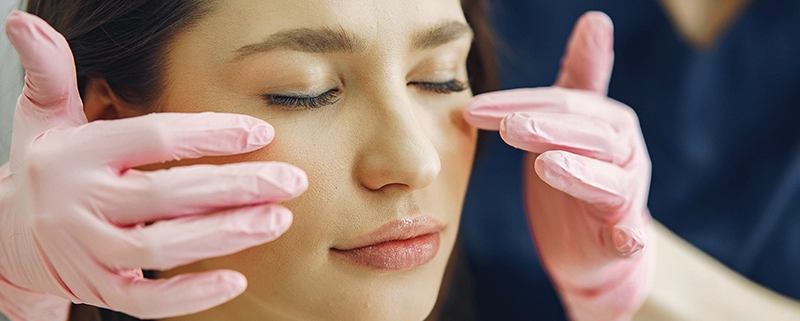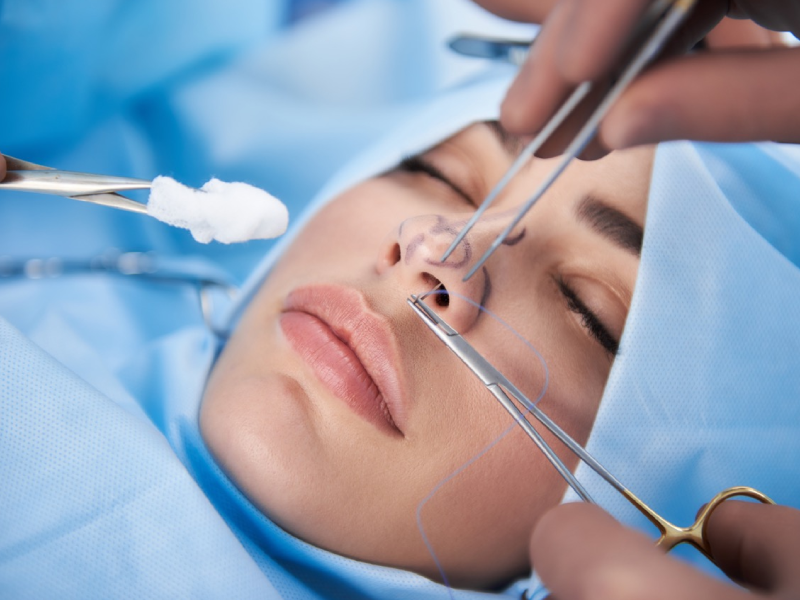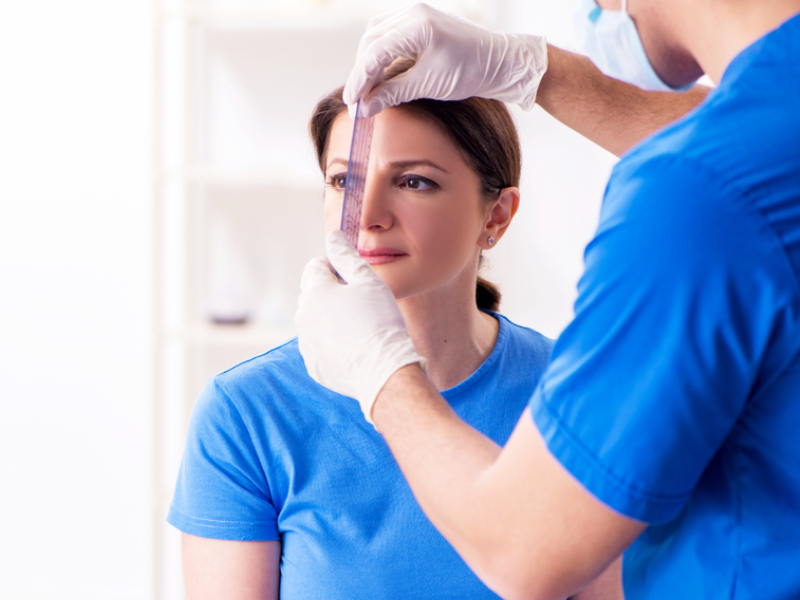Nose Job or Rhinoplasty in Iran; All You Need to Know
Rhinoplasty, or nose reshaping surgery, has become a sought-after procedure worldwide, and Iran has emerged as a global hub for this cosmetic surgery. Iran’s reputation as a global leader in rhinoplasty has attracted domestic and international patients. Aside from domestic tourists, Iran has emerged as a significant draw for international tourists seeking quality and affordable nose-reshaping procedures. The country’s rich cultural heritage, skilled plastic surgeons, advanced medical facilities, competitive pricing, and warm hospitality make it an appealing destination for those considering rhinoplasty abroad. In this article, we will explore the factors contributing to Iran’s popularity as a medical tourism hub for rhinoplasty and the benefits it offers to international visitors.
What is Rhinoplasty?
A nose job, or rhinoplasty, is a surgical procedure used to reshape or resize the nose. It can be done for both cosmetic reasons, such as improving the appearance of the nose and face, and for functional reasons, such as correcting breathing difficulties or addressing a deviated septum. It involves making incisions inside the nose or sometimes on the external surface of the nose to access the underlying structures and modify them as desired. The surgeon may remove or rearrange cartilage and bone and later close the incisions. Rhinoplasty can generally be performed as an open procedure, where the surgeon creates a small incision between the nostrils, or a closed procedure, where all incisions are made within the nose.
What Does Rhinoplasty Include?
Consultation and Evaluation: The process begins with a consultation with a plastic surgeon specializing in rhinoplasty. The surgeon will assess the patient’s nasal structure, discuss their goals and expectations, and evaluate their overall health to determine if they are a suitable candidate for the procedure.
Anesthesia: Rhinoplasty can be performed under different types of anesthesia, including general anesthesia, where the patient is unconscious, or local anesthesia with sedation, where the patient remains awake but relaxed.
Incisions: Depending on the goals of the procedure, the surgeon will make incisions either inside the nostrils (closed rhinoplasty) or across the columella (the strip of tissue between the nostrils) with an additional internal incision (open rhinoplasty).
Reshaping the Nose: The surgeon will then access the underlying structures of the nose, which may involve reshaping the nasal bones, cartilage, and tissue. Techniques such as osteotomies (breaking and repositioning the nasal bones), cartilage grafting, or tissue removal may be used to achieve the desired shape and proportions.
Correction of Deviated Septum: If the patient has a deviated septum causing functional issues, such as breathing difficulties, the surgeon may perform septoplasty.
Nasal Tip Refinement: If the patient wishes to address concerns related to the nasal tip, the surgeon can modify and reshape the cartilage and tissue in the tip region to achieve the desired contour and definition.
Symmetry and Proportion: The surgeon will work to ensure symmetry and balance in the nose, taking into account the patient’s overall facial features and desired aesthetic outcome.
Closure: After completing the necessary adjustments, the surgeon will close the incisions using sutures, which may be absorbable or require removal during a follow-up appointment.
Care and Recovery After Rhinoplasty
Care and recovery after rhinoplasty is crucial for optimal healing and achieving desired outcomes.
Follow the Surgeon’s Instructions: Adhere to the specific post-operative instructions provided by your surgeon. A wound care guide, medication instructions, activity restrictions, and follow-up appointments may be included in these instructions.
Manage Swelling and Bruising: Swelling and bruising are common after rhinoplasty and can last several weeks. To help reduce swelling, keep your head elevated when resting or sleeping, apply cold compresses to the area as advised by your surgeon, and avoid activities that can increase blood flow to the face.
Pain Management: Your surgeon may prescribe pain medications to manage any discomfort during the recovery. Take the prescribed medication as directed and consult your surgeon if you have concerns about pain management.
Nasal Care: Nasal care is essential after rhinoplasty. Your surgeon may provide instructions on how to clean the nasal area and potentially use saline sprays or rinses to keep the nasal passages moist. Avoid blowing your nose forcefully during the initial healing phase.
Sun Protection: Protect your nose from direct sunlight by wearing a wide-brimmed hat or using sunscreen with a high SPF. Sun exposure can affect the healing process.
Iranian Nose Job
In recent years, Iran has gained a reputation as the “nose job capital of the world.” The popularity of nose jobs, also known as rhinoplasty, is particularly high among young Iranians, both men and women. This trend can be attributed to various factors, including cultural ideals of beauty, increased access to cosmetic surgery, and the influence of social media.
In Iranian culture, physical appearance plays a significant role. A well-proportioned and balanced face is highly valued, and a prominent nose is often seen as less attractive. As a result, many Iranians, especially young people, seek to enhance their appearance through rhinoplasty. This procedure can create a more symmetrical face, reduce the size of the nose, or correct nasal deformities.
Iran’s Rank in Health Tourism
Iran has been gaining recognition as a prominent destination for health tourism, including medical procedures such as rhinoplasty. While specific rankings may vary depending on the source and criteria used, Iran is known for its well-established healthcare system and expertise in various medical fields.
Iran’s Ministry of Health and Medical Education has been actively promoting medical tourism and aims to position Iran as a leading destination for healthcare services. The country has made significant investments in medical infrastructure, including modern hospitals and clinics with advanced technology. Additionally, Iranian medical professionals are highly regarded for their expertise and skills, with many receiving both domestic and international training.
Iran Rhinoplasty Surgeons
Iranian plastic surgeons have gained international recognition for their exceptional skills and expertise in rhinoplasty. They undergo rigorous training and education, often at reputable international institutions, and hold several years of experience in performing nose-reshaping procedures. This expertise, combined with a meticulous approach to patient care, makes sure that international tourists receive world-class medical treatment.
Advanced Medical Facilities and Technology
Iran has made substantial investments in its healthcare infrastructure, boasting modern clinics and hospitals equipped with state-of-the-art technology and adhering to international standards. The availability of advanced medical facilities enhances the safety and success rates of rhinoplasty procedures, providing international patients with peace of mind during their surgical journey.
Iran Nose Job Before and After
It’s important to remember that each individual’s results will vary based on their unique facial features, surgical techniques employed, and the specific goals of the procedure. Before and after photos can provide a general idea of the potential outcomes of rhinoplasty, but it is crucial to consult with a qualified plastic surgeon to understand how the procedure can be tailored to your specific needs and desired results.
Choosing the Right Surgeon and Clinic
Before undergoing rhinoplasty in Iran, it is crucial to do thorough research and select a reputable plastic surgeon and clinic. Reading patient reviews, examining before-and-after photos, and scheduling consultations with multiple surgeons will help you make an informed decision. It is essential to choose a surgeon who listens to your expectations, provides a clear understanding of the procedure, and ensures your safety and satisfaction.
Rhinoplasty Cost in Iran
Rhinoplasty prices in Iran can vary depending on several factors, including the complexity of the procedure, the surgeon’s experience and reputation, the location of the clinic, and the specific facilities and services provided. However, in general, rhinoplasty in Iran is known to be more affordable compared to many Western countries.
The average cost of rhinoplasty in Iran typically ranges from $1,000 to $3,000. This range is an estimate and can vary depending on the factors mentioned above. Additional expenses may also arise for diagnostic tests, medications, and any unforeseen complications. It’s worth noting that if you are an international patient considering rhinoplasty in Iran, you should also consider other associated costs such as travel expenses, accommodation, and any necessary visas or travel documents.
Safety and Quality Assurance
Iran has stringent regulations and standards in place to ensure patient safety and quality of care. Iran medical tourism industry is closely monitored by regulatory bodies, and clinics and hospitals must meet specific criteria to maintain their accreditation. International tourists can have confidence in the professionalism and ethical standards upheld by Iranian medical practitioners.
Important Considerations for International Patients
International patients considering rhinoplasty in Iran should ensure they have the necessary travel documentation, including a valid visa. They should also plan for post-operative care and recovery, which may involve staying in Iran for a certain period of time. It is advisable to consult with the chosen surgeon and clinic to understand the specific requirements and recommendations for your case, including follow-up appointments and potential travel restrictions.
Final Word
Rhinoplasty in Iran has garnered international acclaim for its quality, affordability, and cultural appeal. The country’s skilled plastic surgeons, advanced medical facilities, cost savings, captivating attractions, and warm hospitality make it an attractive destination for foreign tourists seeking nose-reshaping procedures. By combining the pursuit of aesthetic goals with an immersive cultural experience, international visitors can enjoy a transformative journey that not only enhances their appearance but also introduces them to the rich tapestry of Iranian history, culture, and hospitality.
Get a Free Consultation for the best rhinoplasty in Iran by sparing a few seconds to fill out the form on Iran medical tourism page. We will be in contact with you as soon as possible.









Leave a Reply
Want to join the discussion?Feel free to contribute!